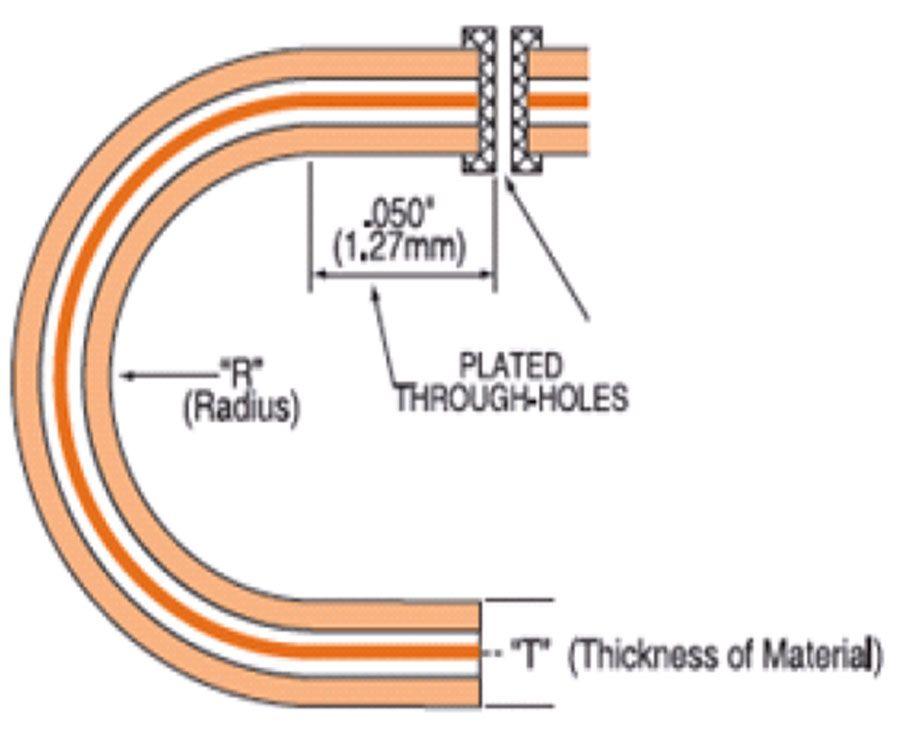
Flex PCB and Rigid-Flex Bend Capabilities
Printed circuit boards have allowed engineers to downsize equipment exponentially. Do you remember the first handheld radiophones companies like Motorola used to make? It wasn't even perceivable that we would have devices thinner than our notebooks and binders in the near future.
The smartwatch you use to track your heart rate, the tablet you create works of art on, and any other nifty smart devices all exist because of circuit boards. Just like human beings have intricate and complex networks of blood capillaries spanning the entire length of our bodies, electrical appliances also require such discrete wiring that an external observer cannot see.
As a result, printed circuit boards were created using the concepts of traditional circuit boards as means to connect different electrical components. They can have a single layer or multiple layers of circuitry depending on the design of a system. The most popular types include flex and rigid-flex boards. In this article, we will explore flex and rigid-flex PCB bend capabilities.
Flex and Rigid-Flex PCB Boards
Flex circuit boards are flexible printed circuit boards. It means that they can be bent, looped, or twisted to fit inside a device and maximize the utility of space. Flex circuit boards have allowed for the gradual downsizing of electronic equipment.
Similarly, rigid-flex circuit boards combine the essential qualities of rigid and flex circuit boards to provide us with newfound benefits and innovation in electrical design. Flex boards can require connectors and flexible cables to facilitate connections with different components in a device; this can be a problem in devices where the circuit boards are expected to flex throughout the expectancy of a device's life, such as in the case of remote-controlled toys.
However, rigid-flex circuit boards offer a solution by encasing the flex layer inside a rigid board, thereby eliminating the need for cables or connectors. This begs the question: Just how much can you bend them? Can flex and rigid-flex boards be bent a limitless number of times, or do they have a life expectancy?
Well, this all depends on the design since these boards are custom built to fit the needs of different devices and appliances. The issue lies in providing unhampered electrical flow so the device functions properly. Let's take a deeper look into the matter.
Flex and Rigid-Flex PCB Bend Capabilities
Flex and rigid-flex bend PCB capabilities concern the validation process. It is essential to validate any scientific process and establish beforehand what works and what might be considered a complication. The same can be said about flex and rigid-flex boards. Knowing and verifying their bend capacity is essential before incorporating them into a device's design. How can you do that? Well, the single most important thing is to know the bend radius.
Flex PCB Bend Radius
The bend radius is a calculation that allows designers to confirm whether a printed circuit board will be able to meet the mechanical bend requirements of an appliance. When a flex circuit is bent, the inner layer experiences compressive forces while the outer bend experiences tensile forces.
Flex bed radius allows you to determine the extent to which a printed circuit board can bend without exceeding the physical capabilities of the copper circuitry; doing so could result in device failure, failed parts, or long-term reliability concerns.
Before establishing the flex bend radius, you need to determine the type of flex board standard you are using. Bend requirements fall into three categories depending on the three types of flex circuit board standards:
i. Flex to Install
ii. Dynamic Flex
iii. One Time Crease
Calculated as a multiple of flex thickness, the bend capabilities of flex and rigid-flex boards are determined based on the deformation that copper is subjected to. Circuits with 3 layers, or more, require bonded designs to increase the bend radius.
Flex PCB to Install
In this design, the flex board is bent to a specific shape and fits into the assembly. The flex circuit is only bent into the required shape, and it will not be bent further or subjected to stress greater than its bend radius. To calculate the minimum bend radius, a number is multiplied with the finished flex thickness:
• 1-2 layers: 6X (multiply with 6)
• 3 or more layers: 12X (multiply with 12)
Dynamic Flex PCB
Dynamic Flex design requires the flex circuit board to be bent as a function for an indefinite number of cycles. It should preferably be a one-layer design, two-layer in extreme cases, so the copper is allowed to sit on the neutral axis of the bend radius. The design aids in achieving a bend radius of approximately 100 times the final flex thickness!
One Time Crease
One Time Crease involves the flex circuit board to be bent to the point of zero bend radius, hence forming a crease. It is installed into the final assembly in this conformation, and the design is not meant to be unfolded. The bend radius is irrelevant in this specific design model, but there are other specifications required for the optimal function of the design.
Firstly, the flex materials and copper weights required for the design to work should be very thin, and the layers should not be more than two since the copper has to sit on the neutral axis of the bend radius. Pressure-sensitive adhesive, or PSA, is also used to keep the crease in place and prevent further design manipulation.
Adjustments
Different design models and standards can vary in thickness and have an impact on the bending capability of a circuit. Companies like Hemeixin Electronics can help provide you with custom flex and rigid-flex PCB boards that require varying thickness for functions like controlled impedance, EMI, and RF shielding so that your printed circuit boards have maximum bend capability.
Hemeixin Electronics provides more variations among the different types of circuit boards than you can count on your fingers, so visit their website and get a quote today!




